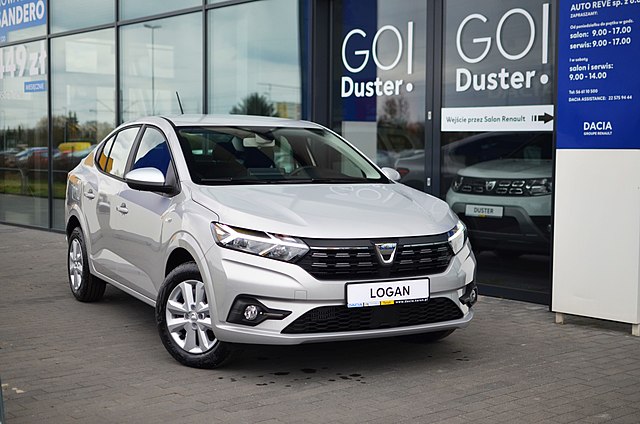As the global economic situation deteriorates amid the Russian invasion of Ukraine and soaring energy costs, many aspiring entrepreneurs might be tempted to give up and wait for better days. But don’t give up!
It is true that founding a startup in times of crisis may look more challenging. Investors can also be skittish, and winning new customers is not easy. However, a crisis can also be a golden opportunity to launch a new product or service, as long as the startup at the origin applies specific methods. One of them is called frugal innovation.
Entrepreneurs — frugal innovation can be a powerful tool for growth
Frugal innovation is the process of doing more with less. It can help startups stretch their resources further and achieve a more significant impact. In this post, we explore ways frugal innovation can be used to grow your startup. We’ll also look at some examples of startups that have used this approach to significant effect. Look for new ways to drive growth for your startup.
History of frugal innovation

The term “frugal innovation” was coined by Navi Radjou and Jaideep Prabhu in their 2012 book Jugaad Innovation: Think Frugal, Be Flexible, Generate Breakthrough Growth. In the book, the authors explore how frugal innovation can be used to create value in low-resource contexts.
Frugal innovation has its roots in the developing world, where resource constraints have always necessitated a more creative approach to problem-solving. This is evident in the widespread use of Jugaad, a Hindi term that refers to improvised or makeshift solutions.
In recent years, however, frugal innovation has also gained traction in developed countries. This is partly due to the global financial crisis of 2008, which led many companies to reassess their spending to cut costs.
Nowadays, frugal innovation is increasingly being embraced by businesses as a way to drive growth with limited resources. Indeed, startups often have to be scrappy and resourceful to get off the ground, and frugal innovation can help them do more with less.
How frugal innovation can help your startup grow
There are many ways in which frugal innovation can help your startup grow. Here are some of the most important benefits.
-
It allows you to stretch your resources further
As a startup, you probably don’t have much money to spend on marketing or product development. This is where frugal innovation can help, as it allows you to stretch your resources further and get more bang for your buck.
For example, you might use guerilla marketing techniques to promote your product without spending much money on traditional advertising channels. Or you could use open-source software to develop your product, which is often free or low-cost.
-
It helps you to focus on what’s important
When limited resources constrain you, you must be very strategic about using them. This means you need to focus on the most important things to your business and let go of anything that isn’t essential.
In other words, frugal innovation forces you to focus on the things that really matter. This can help you to streamline your business and avoid wasting time and money on non-essential activities.
-
It helps you to be more creative
You have to get creative when you’re forced to do more with less. This is because you can’t rely on traditional methods or solutions to solve your problems.
This creativity can lead to breakthroughs that you wouldn’t have otherwise achieved. And it’s this kind of innovative thinking that can help your startup to grow and thrive.
-
It helps you to understand your customers better
When trying to stretch your resources further, it’s essential to understand your target market and what they want. Indeed, you need to be sure that your product or service is genuinely solving a problem for them.
Solving an issue or problem is even more true in a situation of economic crisis, where people are more careful with their spending and are less inclined to try products or services they don’t know.
By understanding your customers’ needs, you can develop a product or service that meets their specific requirements. This laser focus on your target market can help you to serve them better and grow your business.
Examples of successful frugal innovations
There are many examples in which frugal innovation allowed significant growth for the company behind it. Here are just a few.
The Raspberry Pi

The Raspberry Pi is a prime example of frugal innovation. Developed by the UK-based nonprofit Raspberry Pi Foundation, this tiny computer was designed to provide affordable access to computing education in schools.
Despite its low price point (US$35), the Raspberry Pi offers impressive technical capabilities and has become popular among hobbyists, researchers, and commercial businesses. Its simplicity and versatility have allowed for various innovative uses, from serving as the brain of a homemade robot to helping farmers monitor crop growth. The success of the Raspberry Pi demonstrates the potential for frugal innovation to not only benefit consumers on tight budgets but also spur creativity and drive social change.
Airbnb
Airbnb is another example of this approach. By utilizing unused space in people’s homes and apartments, they were able to create a highly successful global accommodation platform without the expensive overhead costs of traditional hotels.
Not only does this benefit travelers seeking affordable accommodations, but it also helps individuals monetize their spare rooms while boosting local economies. In this way, Airbnb has used frugal innovation to solve both practical and social problems, making it a model for future businesses looking to maximize their resources.
Google Street View

Google Street View is another service creating maximum value with minimal resources. The service provides high-resolution, 360-degree images of streets and buildings worldwide. These images were collected using a relatively simple and inexpensive camera system mounted on cars and other vehicles.
However, the impact of this frugal technology has been immense. Google Street View allows individuals and businesses to explore destinations, plan trips, and navigate unfamiliar areas without leaving their homes. It also serves as a valuable resource for those in the real estate and construction industries. Finally, it provides essential visual information at a low cost. In short, Google Street View exemplifies how a small investment can yield significant returns.
Mobile banking in developing countries
The traditional banking system often excludes those living in poverty, making it difficult for them to save and manage their money. Some companies, such as M-Pesa in developing countries, offer a solution by utilizing widely available and affordable technology.
By providing access to bank accounts through basic cell phones, individuals can participate in the formal financial system at a lower cost. This frugal innovation addresses the needs of those living in poverty while using resources efficiently and creatively.
In addition, mobile banking can lead to more excellent financial stability and empowerment for individuals and communities, helping to reduce inequalities and promote development. As more companies and organizations invest in mobile banking technology, it has the potential to make a significant impact on global financial inclusion.
The Renault Logan

The Renault Logan, released in 2004, is a prime example of frugal innovation. Developed for emerging markets by the Renault-Nissan alliance, the car was designed with simplicity and cost-effectiveness in mind without sacrificing fundamental functionality and quality.
By using existing parts from other models and eliminating unnecessary features like power windows and air conditioning, the Logan maintained a low price point while still meeting consumer needs.
Its success has been evident not only in its widespread adoption by buyers in emerging markets but also in its expansion into developed markets, where it has seen success as a budget-friendly alternative. The Logan’s frugal approach to design and production is a model for companies looking to innovate efficiently and effectively.
What makes an excellent frugal innovation?
Suppose you want to use frugal innovation to grow your startup. In that case, it’s crucial to create a product or service that is truly valuable to your target market.
As with ANY entrepreneurial venture — each of these suggestions should be your goal whether you have billions to spend — or you are just beginning your quest for a new product or service. Here are a few factors to keep in mind:
-
It should solve a basic problem
The best frugal innovations solve a defined basic problem for their users. It looks obvious to state, but people are more likely to use and pay for products or services that make their lives easier.
-
It should be affordable
Another vital factor to consider is affordability. If your product or service is too expensive, it’s less likely that people will use it. That is even more true in developing countries.
-
It should be easy to use
Your product or service should also be easy to use. Compared to your competitors, it should make things much more straightforward.
-
It should be scalable
Finally, your product or service should be scalable. This means that it should be able to grow as your business grows.
Strategies to implement frugal innovation
If you want to use frugal innovation to grow your startup, there are a few key strategies that you should keep in mind. Here are a few of the most important ones.
Keep your target market in mind
Keeping your target market in mind when developing a new product or service is essential. Hence it is critical to have a solid business plan before you start. Indeed, it avoids frequent strategy changes along the way, making your product or service difficult for your potential customers to understand.
Furthermore, having a target market will help you fulfill a need while considering this market’s constraints. This is especially relevant if this target market is far from your traditional market (e.g., an emerging market vs. a developed market).
Simplify your offering
Another critical strategy is to simplify your offering. Narrowing down to one or two core offerings allows you to streamline your processes and focus on achieving excellence in those areas. For example, you can remove features that are not part of the basic functionalities.
Simplify complicated, expensive, or time-consuming parts or processes. Or reuse existing resources instead of making new ones.
Focus on quality, not quantity
Focusing on high-quality products and services will result in satisfied customers and build trust and credibility for your brand. Additionally, focusing on quality can often save time and resources in the long run. For example, poorly designed or shoddy products require more revision and repair, leading to wasted time and effort.
On the other hand, high-quality products require less maintenance. They may even lead to repeat business or positive word-of-mouth advertising.
Invest in your team
Investing in your team’s ability to innovate frugally can pay off in the long run. Utilizing creativity and resourcefulness to solve problems not only helps to stretch limited funds but also encourages out-of-the-box thinking that can lead to new perspectives and breakthrough solutions.
In addition, investing in employee training and development shows employees that their growth and success are valued, resulting in higher satisfaction and retention rates. So while it may seem like a cost now, investing in frugal innovation for your team can lead to increased productivity and profitability.
Wrap-up
Frugal innovation is a powerful tool that can help you to grow your startup. If you keep these factors in mind, you can use them to create a valuable product or service that will appeal to your target market.
Inner Image Credit: Provided by the Author; Thank you!
Featured Image Credit: Mikhail Nilov; Pexels; Thank you!
The post How to Use Frugal Innovation to Grow Your Startup appeared first on ReadWrite.


Comentarios recientes